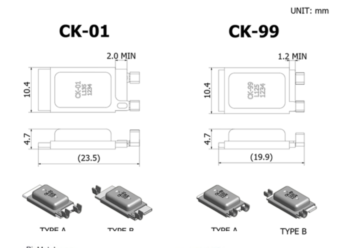With the development of science and technology, the demand for electronic products is increasing, and electrical accidents have become common. Equipment damage caused by voltage instability, sudden voltage changes, surges, line aging, and lightning strikes is even more numerous.Therefore, thermal protectors came into being, which greatly reduced the phenomenon of burning equipment, reducing equipment life, and even endangering personal safety caused by various reasons. This paper mainly introduces the principle of thermal protector。
1. Introduction to thermal protector
Thermal protector belongs to a kind of temperature control device. When the temperature in the line is too high, the thermal protector will be triggered to disconnect the circuit, so as to avoid equipment burnout or even electrical accidents; when the temperature drops to the normal range, The circuit is closed and the normal working state is restored. The thermal protector has the function of self-protection and has the advantages of adjustable protection range, wide application range, convenient operation, high voltage resistance, etc. It has been widely used in washing machines, air conditioners, ballasts, transformers and other electrical equipment.

2. Classification of thermal protectors
Thermal protectors have different classification methods according to different standards, they can be divided into large-volume thermal protectors, conventional thermal protectors and ultra-thin thermal protectors according to different volumes;they can be divided into normally open thermal protector and normally closed thermal protector according to the nature of the action;they can be divided into self-recovery thermal protector and non-self-recovery thermal protector according to the different recovery methods.Among them, the self-recovery thermal protector refers to that after the temperature is too high and the thermal protector is disconnected, when the temperature is reduced to the normal range, the thermal protector can automatically return to the original state so that the circuit is turned on,and the non-self-recovery thermal protector cannot perform this function, it can only be restored manually, so the self-recovery thermal protector has a wider application.
3. Principle of thermal protector
The thermal protector completes circuit protection through bimetallic sheets. At first, the bimetallic sheet is in contact and the circuit is turned on. When the circuit temperature gradually increases, due to the different thermal expansion coefficients of the bimetallic sheet, the deformation occurs when heated. Therefore, when the temperature rises to a certain critical point, the bimetals become separated and the circuit is disconnected to complete the protection function of the circuit. However, it is precisely because of this working principle of the thermal protector that during its installation and use, remember not to forcibly press, pull, or twist the leads.

Post time: Jul-28-2022
